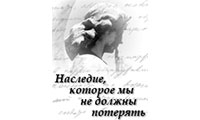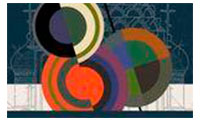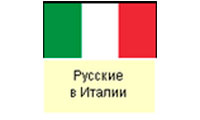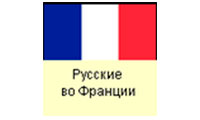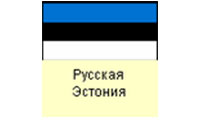Eugene Klimoff
Eugene Klimoff (Yevgeny Klimov; 1901, Jelgava, Courland Governorate, Russian Empire – 1990, New York st., USA) – artist.
The works of Eugene Klimoff were distinguished by their variety and diverse range – painting, graphics, mosaics, restoration works, icon-painting, art history and teaching.
The life of Eugene Klimoff is closely connected with Latvia. Here he was born, studied at the Art Academy, became an artist and an educator, here lived his students.
Eugene Klimoff was born in 1901 in Mitau (Jelgava), the center of Courland governorate. He spent his childhood years in different cities of the Baltics and in Warsaw. He attended gymnasium in Saint-Petersburg, but graduated in Novocherkassk, but his first independent works were created in Riga, the capital of the young Republic of Latvia.
In accordance with the family tradition, Eugene Klimoff wanted to become an architect, however, this wish never came true due to his non-Latvian ethnicity and poor knowledge of Latvian language, so he enrolled into the Art Academy, to the class of professor Janis Tilbergs (figure painting).
Tilbergs himself studied at the Saint Petersburg Academy of Art and paid especial attention to the precision of a drawing. Eugene Klimoff graduated from the academy (in 1929) as an outstanding drawer and an exquisite painter. Professor Boris Vipper, a world-famous Russian scientist, taught the history of art.
However, creative work in modest Latvia was a pipe-dream, so Klimoff became an educator. For more than ten years he had been teaching drawing and the history of art at the Lomonosov (later – State Russian) gymnasium, and also worked as an artist.
As an artist, Klimoff was searching for everything Russian in the Baltics – people, traditions, antiquities. Albums of his lithographies depict, not only well (and less) known locations in the Old Riga and other cities of Latvia, but also the landscapes of the Pechory district, which at that time was a part of Estonia. The ancient ruins of Izborsk, churches of the Pskov-Pechory Monastery, small Russian villages – all of that was carefully sketched and put on canvas. His album “Travelling in Pechory District” was published in Riga and received numerous praising reviews, also from such distinguished figures of Russian culture abroad as philosopher Ivan Ilyin, writer Ivan Shmelyov, artist and art critic Alexandre Benois.
In the course of ten pre-war years, Klimoff published a total of nine albums of his lithographies. In the handbook of Latvian fine arts (published in 1939), a separate article was dedicated to the artist. It also contained a high evaluation of his work.
The artist dedicated a lot of his efforts to iconography, study and restoration of ancient icons. He was referred to as “an experienced, cognizant and inspired icon painter”, whose style was “strict in composition, precise in drawing style, bright and exhilarated in the application of colour”. In cooperation with Yuri Rikovsky, Klimoff completed a big wall fresco “The Trinity” in the Riga church of Saint John. He completed the mosaic image of Saint John the Baptist, which decorated the chapel of the Pokrov Orthodox Cemetery in Riga.
Klimoff had continued working during the World War II – he taught at the gymnasium, travelled a lot, and drew at every place he visited – as if bidding farewell to the Motherland. In 1942 in Riga he made a sketch of the mosaic icon “The Holy Trinity” in accordance with the motif of the famous icon “Trinity” by Andrei Rublev. Klimoff was intending to give it to the Trinity Cathedral in Pskov. He ordered the technical rendition of the icon in one of the best workshops of Europe. By some mystical force, the icon was delivered to the Cathedral.
In 1944 he receiving an invitation from the Kondakov’s Archaeological Institute in Prague, to take a position of icon restorer, and thus the artist left Latvia for good. After roaming different cities of Europe Klimoff, together with his family, left for Canada, where he spent the second half of his life.
In North America Klimoff continued his work as an artist and an educator. Here, just like in Latvia, he received recognition. In a handbook “Canadian Artists” (1971) was mentioned his contribution to the art of this country. Klimoff was an author of more than 300 publications, among which the book “Russian Artists” must be especially noted. It was published in New York in 1974.
“For a Russian artist, - as Klimoff wrote in the book, simultaneously revealing his own credo, - painting was not an amusement, not a game, but the manifestation of his feelings before the face of the Lord, before the beauty of nature, as well as the need to comprehend his national character, his historical past.” The Russian artist believed that art is closely connected with moral needs and aspiration towards verity; that beauty, good and verity cannot be separated from each other, but concur in their very essence”.
“There are people, memories of whom purify the soul,” – wrote someone who was closely acquainted with Eugene Klimoff. His art also obtains this amazing quality.
Alexander Malnatch
P. S.
The ancestry of Eugene Klimoff requires a special attention, since family traditions largely affected his faith.
From the father’s side, his great-grandfather was Ivan Klimov (1811-1883) – a famous architect and academician from Saint-Petersburg. One of the lanes of this marvelous city is named after him. His grandfather, Alexander Klimov (1841-1887) was a well-known architect, so no wonder that architecture was Eugene’s childhood dream. However, due to certain circumstances, he chose painting and the history of art.
The father of the future artist, Yevgeny, did not follow the footsteps of his father and grandfather. He graduated from the law faculty of the University of Saint Petersburg. However, it is possible to assume, that this choice did not bring any true satisfaction to the young specialist. Throughout his whole life various cultural events were his real enthrallment, and he managed to pass this interest to his sons. In a year after the graduation he left the capital and received the position of a court secretary’s assistant in Mitau/Jelgava. There, in 1893 Yevgeny Klimov (1868-1919) married Maria Kuntze (1870-1949). In the same city, all of their sons were born: Georgy (1895-1967), Konstantin (1896-1974), Pavel (1899-1970), and the youngest, Yevgeny (1901-1990).

Yevgeny A. Klimov with his spouse Maria (born Kuntze) and children Georgy and Konstantin. Jelgava. 1897. Archive of Alexei Klimov
In 1895 he received a position at the Courland Excise Administration. In 1903 Eugene received the position of an excise inspector in Libau (Liepaja), where his whole family moved together with him. In Libau the Klimoffs resided until 1911. Here Eugene Klimoff received his first basic knowledge.
In the same year Klimoff’s father received an appointment in the Warsaw governorate. The family’s connection with Latvia had been interrupted for ten years…
***
His ancestry from the mother’s side is no less interesting. His ancestor was a famous carriage master Johann Kunst, who came from Germany to work by the Russian imperial court. In the course of time, his Russified descendants altered the surname into Kunce. Eugene’s grandfather was a doctor, graduate of the University of Dorpat (Yuryev) Alexander Kunce (1843-1911), who started his career in the Far East, in Nakhodka. There he married an Ussuri Cossack girl Tatiana Fedoreeva.
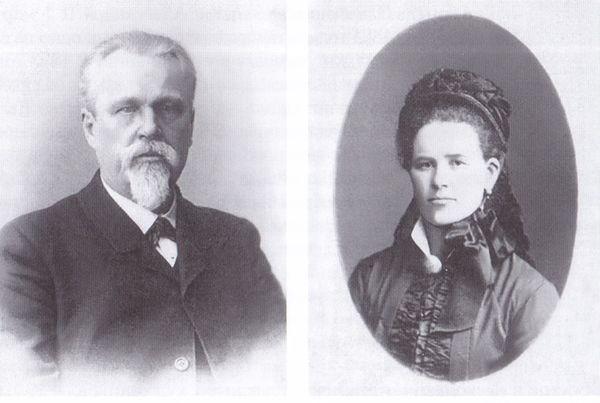
Alexander Kuntze – the grandfather of Eugene Klimoff. Moscow 1900s. Tatiana Kuntze (born Fedoreyeva) – the grandmother of Eugene Klimoff. Moscow, 1870-80s. Archive of Alexei Klimoff
Their only daughter Maria, the future mother of Eugene Klimoff, was born there. Interesting, that at the age of 7 years she was sent by her parents to Saint-Petersburg for study purposes (without any escort). In the course of time, the Kunce moved to the European part of Russia. Alexander Kunce worked as a local doctor in Simbirsk, later in Brest-Litovsk, and his last place of work was in Mozhaysk, where he passed away.
An excerpt from an article (in Russian) by T. Feigmane “Latvia in the Faith of Artist Eugene Klimoff”. - The 8th Pskov Local History Readings. 1st Volume. – Pskov, 12th-14th of October 2018. – Pskov: Pskov State University, 2018, pages 107-115.
***
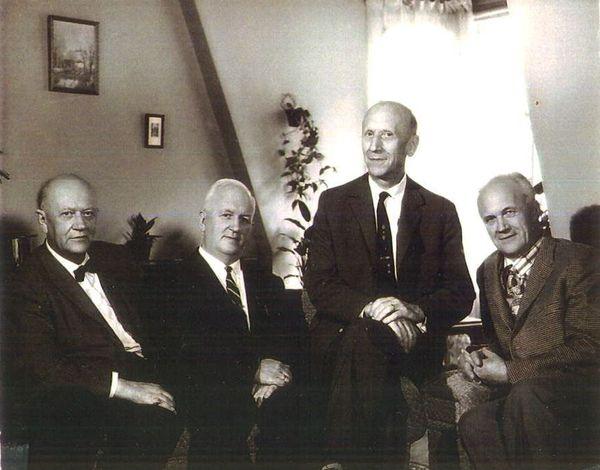
The Klimoff brothers: George, Constantine, Paul and Eugene. Quebec (Canada), 1961. Archive of Alexei Klimoff.
Eugene Klimoff and his wife Maria (born Morozova) had two Riga born sons: Ilya (1936-2020) and Alexei (Alexis;1939).

The Klimoff family in Germany, 1949. From right to left: Eugene his spouse Maria and sons Ilya and Alexei. Archive of Alexei Klimoff.
***
Photo Album of Eugene Klimoff's Artworks prepared by Margarita Saltupe (1917-2006)
Poets and writers of the Russian Diaspora
Е.Е. Климов. Из воспоминаний художника
Евгений Климов. Русские художники
Евгений Климов. Заметки (предисловие и примечания Бориса Равдина)
Материалы о Е.Е. Климове из личного архива М.В. Салтупе


















